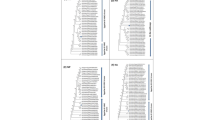Summary
Duck plague virus, isolated from infected ducks on Long Island, New York, was propagated in duck-embryonic-fibroblast cell culture. Cytopathogenicity and eosinophilic, granular, intranuclear, inclusion bodies were seen in the infected cells. The inclusion bodies appeared as early as 12 hours after virus inoculation and became more pronounced and abundant at 32–36 hours postinoculation with cell culture. Their formation was inhibited by duck plague hyperimmune serum. The first 9 serial passages in cell culture were lethal for duck and duck embryos. In addition, the 5th, 6th, 7th, 8th and 9th passages were lethal for chicken embryos. Each of the 5th and 7th virus passages in duck embryo fibroblasts were further passaged in duck and chicken embryo cell cultures. The resulting viruses were nonvirulent for ducks, elicited the development of a relatively low antibody level, but afforded protection against challenge inoculation with duck plague virus. An anamnestic response in antibody level occurred following challenge inoculation which was equal to the antibody level of ducks surviving experimental infection.
Similar content being viewed by others
References
Breese, S. S., Jr., andA. H. Dardiri: Electron microscopic characterization of duck plague virus. Virology34, 160–169 (1968).
Dardiri, A. H., W. R. Hess, S. S. Breese, Jr., andH. R. Seibold: Characterization of a duck virus from a disease outbreak in the United States. Abstr. Proc. 39th Northeastern Conference on Avian Diseases. State University of New York, Stony Brook, L.I., N.Y. 1967.
Dardiri, A. H., andW. R. Hess: The incidence of neutralizing antibodies to duck plague virus in serums from domestic ducks and wild waterfowl in the United States of America. Proc. 71st Ann. Meeting, U.S. Livestock San. Assoc., Phoenix, Arizona, 225–237 (1967).
Dardiri, A. H., andW. R. Hess: A plaque assay for duck plague virus. Canad. J. comp. Med.32, 505–510 (1968).
Jansen, J.: Duck Plague. Brit. vet. J.117, 349–356 1961.
Leibovitz, L., andJ. Hwang: Duck plague on the American continent. Avian Diseases12, 361–378 (1968).
Author information
Authors and Affiliations
Additional information
The Long Island duck disease was designated duck virus enteritis by New York State and ARS regulatory officials 9-Code of Federal Regulations-Part 83-duck virus enteritis (duck plague).
Rights and permissions
About this article
Cite this article
Dardiri, A.H. Attenuation of duck plague virus and its propagation in cell culture. Archiv f Virusforschung 27, 55–64 (1969). https://doi.org/10.1007/BF01250314
Received:
Issue Date:
DOI: https://doi.org/10.1007/BF01250314




